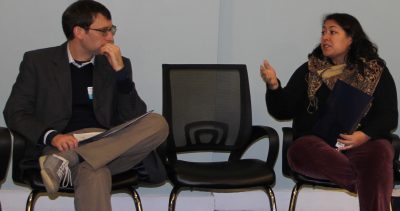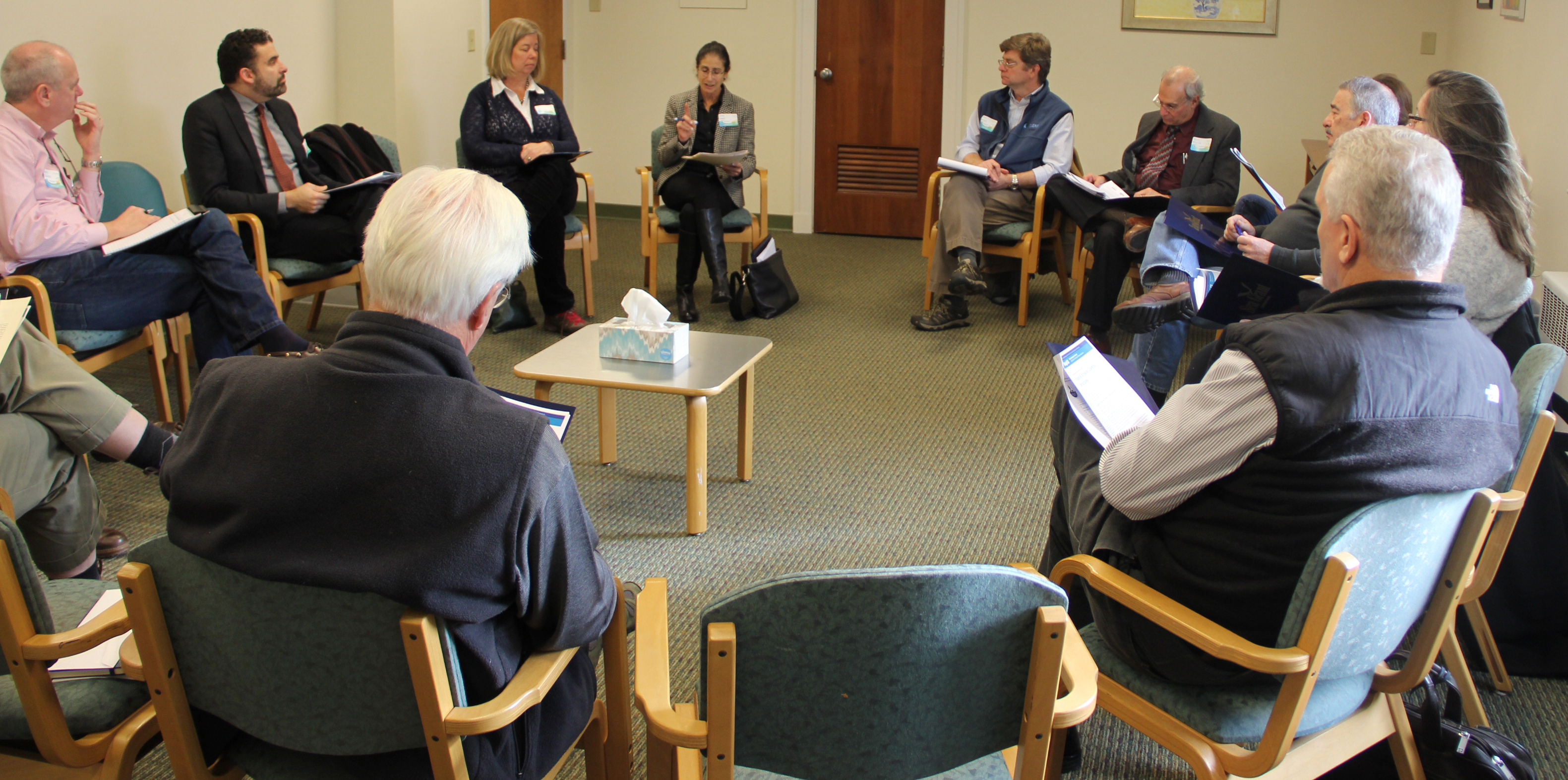
Madison — With images of the devastation of hurricanes Harvey, Irma and Maria still fresh their minds, the 65 municipal officials and others who gathered for the workshop about the legal complexities of climate change adaptation spent the day wrestling with real-life problems without easy answers.
“Is there any ability for a beach association to take their own future into their hands?” asked Christine Nelson, town planner for Old Saybrook, after an expert panel discussed legal issues that arise when public roads are raised, abandoned or discontinued in response to repeated flooding due to sea level rise.
Nelson’s question was one of many posed by the attendees during the Dec. 15 workshop, hosted by Connecticut Sea Grant, the Center for Land Use Education & Research (CLEAR), UConn Extension and NOAA at Mercy By the Sea Retreat and Conference Center. Along with municipal officials, the workshop brought together land trust officials, attorneys, consultants and other interested individuals.
Rather than being an abstract thought experiment, the workshop offered small-group and panel presentations with immediate relevance to the issues Connecticut’s 36 coastal towns are grappling with as sea level rises and storms intensify.
“We need to get out ahead of these issues and not let them be settled in court,” said Juliana Barrett, associate extension educator at Connecticut Sea Grant and one of the lead organizers of the event. “We’ve all been trying to balance public use, public property rights and protection of natural resources before climate change, and now this balancing act will become even more difficult.”

Sea level is projected to rise 20 inches by 2050, she noted. Already, many coastal roads are flooding more frequently during high tides. Inevitably, speakers noted, conflicts will arise as towns seek to resolve these issues, but can be lessened if steps are taken to prepare.
“Do we elevate roads, do we build bridges, or do we abandon roads?” Barrett asked. “Do we simply rebuild after storms, or do we retreat, or do we elevate? What happens when a sea wall is destroyed and one neighborhood decides to rebuild it and one doesn’t? There are so many issues, and many of them have legal implications.”
The workshop was put together as the companion session to one offered in November 2015 that was the first to address legal ramifications of climate change adaptation in Connecticut. After that session, Barrett said, attendees submitted dozens of follow-up questions that were synthesized and categorized to design the next workshop. There, four topics were addressed by experts in small-group discussions during the morning: takings and coastal management; government tort liability for disclosure of flood hazard information; property and permitting boundaries at the shoreline; and flood and erosion control structures. In the afternoon, two panels tackled some of the difficult decisions facing towns as sea level rises. Titled “Resilience, Roads and Regulatory Processes” and “Going Up: Issues Associated with Elevating Structures,” the experts emphasized the need for towns to begin figuring out their adaptation strategies.
“In sessions like this, we can identify those gaps in the regulations we should be thinking about to better equip ourselves,” said Jane Stahl, an attorney and retired deputy commissioner of the state Department of Energy and Environmental Protection in charge of air, waste, water and Long Island Sound Programs.
One of the presenters, Read Porter, senior staff attorney with the Marine Affairs Institute at the Roger Williams University School of Law and the Rhode Island Sea Grant Legal Program, cautioned that towns could face legal challenges both from action and inaction to address climate change impacts.
“There’s danger of liability either way,” he said. “There are a lot of pitfalls for municipalities.”
But complacency will only make the situation worse, said Marjorie Shansky, a New Haven land use attorney and co-author of “From Planning to Action, Biodiversity Conservation in Connecticut.” She advised towns to create “adaptation zones” that ease zoning restrictions on elevation of structures, and host community engagement sessions to educate the public about climate change impacts on their neighborhoods.
“We’re between a rock and a hard place,” she said. “The sea is coming. We have to get people to understand and adapt. We need human adaptation. We need people to bite the bullet and see what’s coming.”
Click here to learn more about the Climate Adaptation Academy and download fact sheets on legal issues associated with climate adaptation.
— Judy Benson
